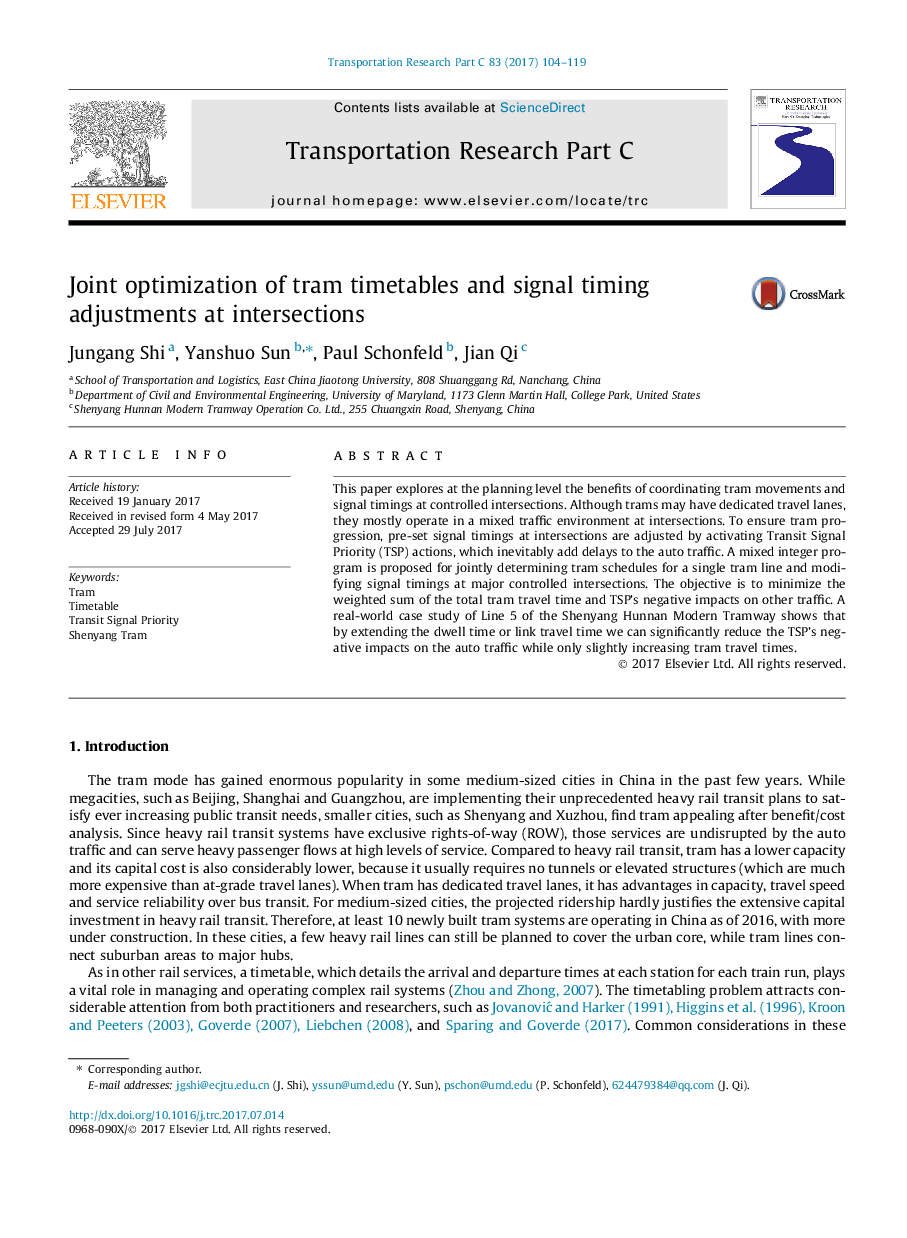| Article ID | Journal | Published Year | Pages | File Type |
|---|---|---|---|---|
| 4968472 | Transportation Research Part C: Emerging Technologies | 2017 | 16 Pages |
Abstract
This paper explores at the planning level the benefits of coordinating tram movements and signal timings at controlled intersections. Although trams may have dedicated travel lanes, they mostly operate in a mixed traffic environment at intersections. To ensure tram progression, pre-set signal timings at intersections are adjusted by activating Transit Signal Priority (TSP) actions, which inevitably add delays to the auto traffic. A mixed integer program is proposed for jointly determining tram schedules for a single tram line and modifying signal timings at major controlled intersections. The objective is to minimize the weighted sum of the total tram travel time and TSP's negative impacts on other traffic. A real-world case study of Line 5 of the Shenyang Hunnan Modern Tramway shows that by extending the dwell time or link travel time we can significantly reduce the TSP's negative impacts on the auto traffic while only slightly increasing tram travel times.
Keywords
Related Topics
Physical Sciences and Engineering
Computer Science
Computer Science Applications
Authors
Jungang Shi, Yanshuo Sun, Paul Schonfeld, Jian Qi,
